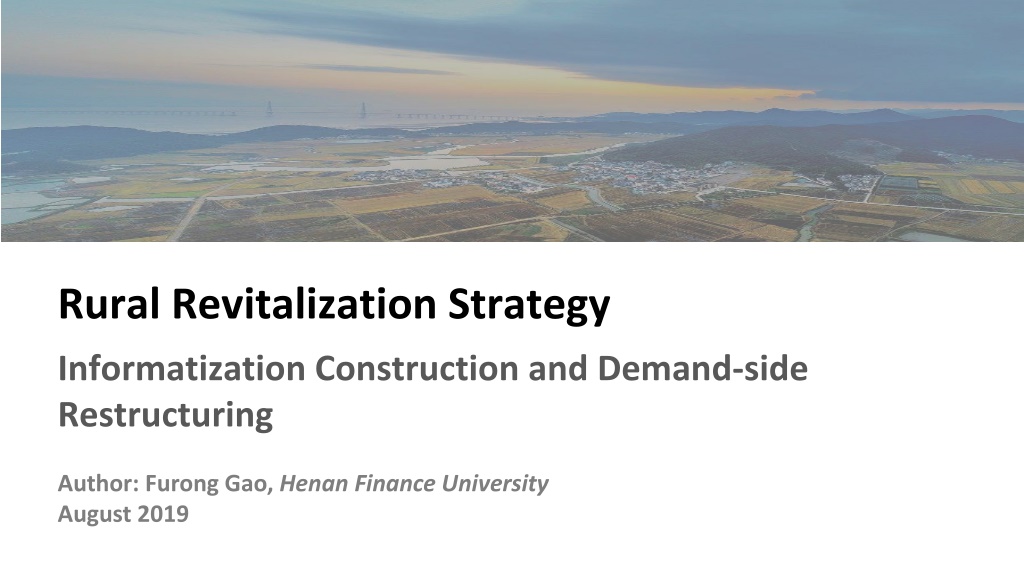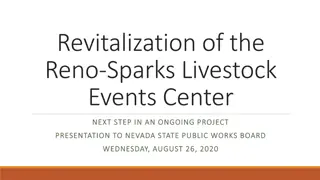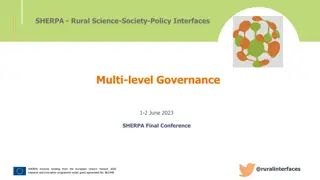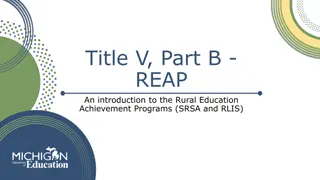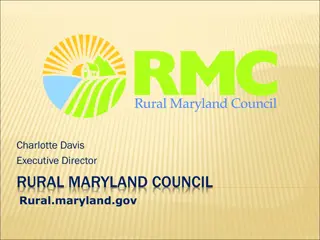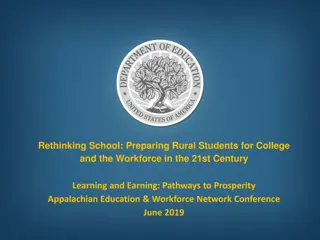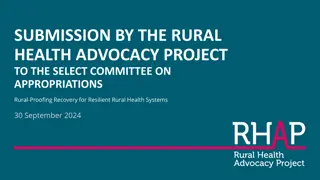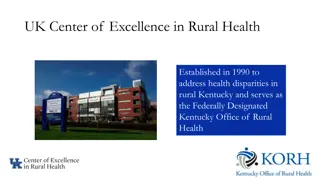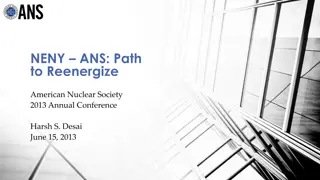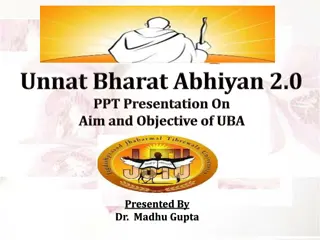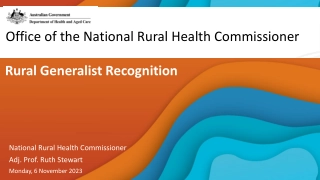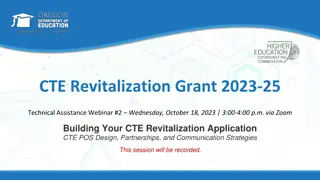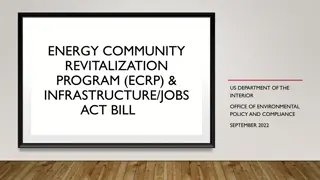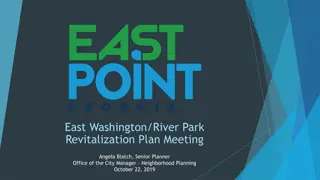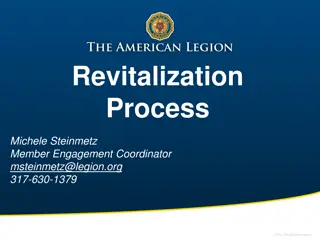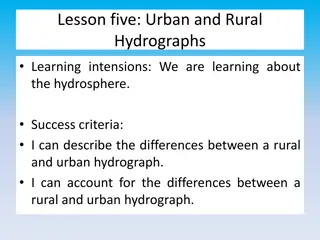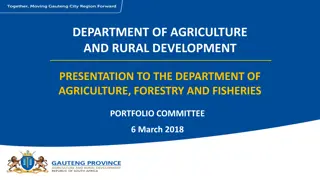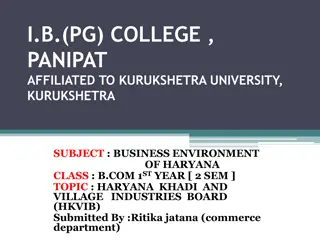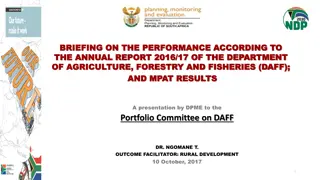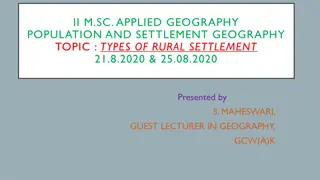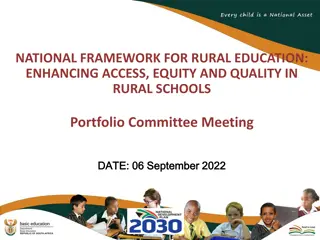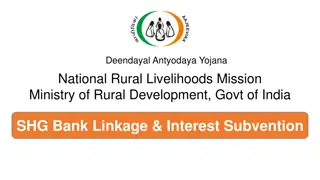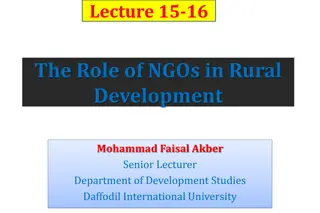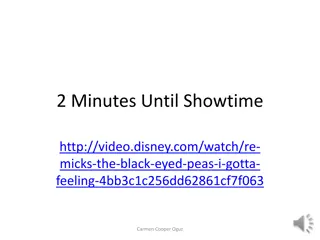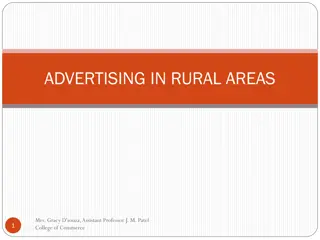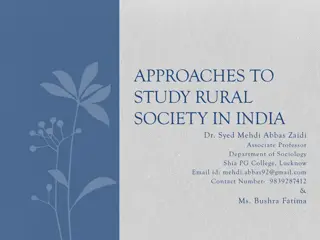Rural Revitalization Strategy and Informatization Construction
This study by Furong Gao explores the intersection of rural revitalization strategy and informatization construction, focusing on imbalances in supply-demand structures. It delves into the background, research ideas, rural informatization development, and agricultural withering. The research uncovers the importance of leveraging technology for rural development and outlines key strategies for comprehensive revitalization by 2050.
- Rural Revitalization
- Informatization Construction
- Supply-Demand Structure
- Agricultural Development
- Technology
Download Presentation

Please find below an Image/Link to download the presentation.
The content on the website is provided AS IS for your information and personal use only. It may not be sold, licensed, or shared on other websites without obtaining consent from the author. Download presentation by click this link. If you encounter any issues during the download, it is possible that the publisher has removed the file from their server.
E N D
Presentation Transcript
Rural Revitalization Strategy Informatization Construction and Demand-side Restructuring Author: Furong Gao, Henan Finance University August 2019
Agenda Background and Research Idea Social Construction of Rural Informatization Actor-Network Imbalanced Supply-Demand Structure of Rural Revitalization and Informatization Construction 4 4 Conclusion and Discussion
Background and Research Idea Background of Rural Revitalization Strategy New-type industrialization Rural hollowing Rural resource elements transfer to urban area and non-agricultural sectors Rural Imbalance between urban and rural development Agricultural withering Urbanization Revitalization Strategy Informatization Farmers ageing
Background and Research Idea Background of Rural Revitalization Strategy Industrial prosperity Ecological and livable residence Five Targets Countryside civilization Effective governance No. 1 Central Document (2018) Affluent life Rural Revitalization Strategy Strategic Planning for Rural Revitalization (2018-2022) 2020: Important progress. Institutional framework and policy system. 2035: Decisive progress. Three Stages Agricultural and rural modernization. 2050: Comprehensive revitalization. Prosperity, beauty, affluence.
Background and Research Idea Rural Informatization Development Rapid Development Stage In the 21stcentury, General Office of the CPC Central Committee, the State Council, Ministry of Agriculture and Ministry of Information Industries have published 2006-2020 National Informatization Development Strategy and a series of documents to promote the construction and development of rural informatization. Development Stage From 1987 to late 1990s, computers and internet technology had been gradually popularized in agriculture. Early Stage In 1970s, information technology was introduced into agriculture. In 1996, the first National Agricultural Information Conference was held, which marks the new era of China s agricultural informatization. In late 1980s, the Ministry of Agriculture established Information Center to focus on and promote the application of information technology in agriculture and rural statistical work.
Background and Research Idea Literature Review Interpretative Study Methodology: by studying how the rural informatization problems are defined, to understand the root cause, evolution patterns and inherent mechanism of the problems during the rural informatization construction. Informatization contributes to rural revitalization Use internet-based initiatives to alleviate poverty Rural e-commerce Constructive Study Conclusion: from a practical viewpoint, the top-level design of rural informatization needs to be improved by enhancing the network operation and providing systematic instructions. The interaction of multiple actors construct rural informatization.
Background and Research Idea Research Idea 2009, Feb. 2010, May: conduct field study in a county in the middle area of China by means of interview and questionnaire, regarding the implementation and results of rural informatization practice. 2018, May-Sept.: expand the study to 4 counties to compare and analyze the evolution pattern and achievements in past ten years. Research Method: based on the supply-demand relation, to clarify the theoretical logic behind the rural revitalization strategy, to explain the inner relations between supply and demand with social construction theory, and to construct the network system of the rural informatization project, so as to verify the assumption that rural revitalization and informatization need to transfer to demand-side and provide theoretical basis for the society decision-makers.
Social Construction of Rural Informatization Actor-Network Actor-Network Theory The core of Actor-Network Theory (ANT) is that society, politics and economics are explanatory variables to the formation of technological knowledge. In other word, authority-technology-society makes it possible for technology popularization. The present rural informatization construction is designed to build up a structural network that is led by the government, conducted by corporates and benefit for farmers. The promotion of rural informatization construction requires deep collaboration from multiple actors, including the government, corporates, universities, research institutions , social organizations and farmers, etc. The structural network, authority-technology-society, shaped by the decision rights, benefit game and technological knowledge, is the principle and resource for the implementation of decision rights. Government, market, and society define rural informatization projects, then initiate, promote and participate in the rural informatization actions. In order to implement rural revitalization strategy and to accelerate transformation of the strategy, it s necessary to have strong promotion by the government, technical and financial support from corporates and self-consciousness of farmers.
Social Construction of Rural Informatization Actor-Network Government Policy Central Government leads the initiation and promotion of rural informatization strategy. 2018 The central "1" document of 2018 takes the strategy of Rural Revitalization as the main line, deploys the work of agriculture, countryside and farmers in an all- round way, clearly puts forward the implementation of the digital rural strategy, completes the overall planning and design, accelerates the popularization of information technology in rural areas, and bridges the digital divide between urban and rural areas. Mid 1990s Digital divide became the new focus. Chinese government started to pay attention to informatization in China. 1960s-1970s 2016 Information inequality attracted attention from the society. National ministries has released over 40 documents to promote informatization, indicating that China has primarily completed the top-level design and corresponding policy deployment of rural informatization work.
Social Construction of Rural Informatization Actor-Network Corporate Technology and Resource Flow National strategies (Infrastructure development) Telecommunication operators Information technology hardware facilities Demand-side (Farmers) Corporates Rural e-commerce Government work (Rural e-commerce, Internet + modern agriculture) Policy documents (No.1 Central Document)
Social Construction of Rural Informatization Actor-Network Rural Response Strategies Government Installment of hardware facilities cannot fully inspire farmers awareness of informatization application. Rural information infrastructure Technology & Investment Rural Area E-commerce Rural internet users Huge potential market
Social Construction of Rural Informatization Actor-Network Rural Informatization Actor-Network Structure Information Technology Industry Market Attraction Rural Online Store Consumer Goods Downstream Farm Product Upstream Value Interest Driven Orientation Demand Side Rural Supply Side High-level Government Farmers Informationization Government Deployment Majority No Chance Political Task Minority Benefit Grass-roots Government Informationization Demonstration Project Honor Attraction, Special Funds Note: solid line indicates material impact, dotted line indicates slight impact or no impact.
Imbalanced Supply-Demand Structure of Rural Revitalization and Informatization Construction Conflict: External Stylized Input and Endogenous Local Adaption Currently, the construction mode of rural informatization still follows government instruction and turns out to be standardized and stylized; once constructed and inspected, the task is announced as complete with no assessment whether farmers truly benefit from it. The rural informatization projects and infrastructures that are built up with external stylized input, without local adaption from the farmers, would be decorations that cost huge investment.
Imbalanced Supply-Demand Structure of Rural Revitalization and Informatization Construction Directional Difference: Government Rigid Supply and Rural Elastic Demand In terms of current practice of rural informatization construction, the improvement of overall informatization level requires top-down guidance led by administrative system, therefore government rigid supply becomes an inevitable choice. While from demand-side, farmers focus on whether informatization can raise living standards, improve life quality and fulfill consumer demand. As a result, the government decide, plan and implement based on their own wishful thinking, where farmers are in a being demanded position, resulting in idle resources and waste. Lack of rights of participation, decision and expression, which the demand-side should have had, leads to directional difference between supply and demand, contradicts between government rigid supply and farmers elastic demand, and ineffective utilization of informatization resources.
Imbalanced Supply-Demand Structure of Rural Revitalization and Informatization Construction Disparity between Supply and Demand: Unidirectional E-commerce Platform and Diverse Rural Demands Currently, farmers needs are transformed to comprehensive structural system that is hierarchical and diverse. They no longer be constrained by subsistence needs but focus more on self-development, which has been the primary consideration of farmers information demand. E-commerce industry should combine their own benefit with government expectations and farmers needs, and adapt to farmers diverse and hierarchical demands via standardized planning and diverse arrangements.
Conclusion: Demand-side Rural Revitalization and Informatization Construction Leading Mode: Government Supply-side Rural Demand-side Government Leading role Main role Lack of initiatives constrains the functionality and the development of rural informatization. Rural Informatization Farmers Corporate Service provider Policy beneficiary Target of service Passive position
Conclusion: Demand-side Rural Revitalization and Informatization Construction Target and Match the Demand-side Actor-Network Structure Open channel for feedback from targeted demand. Management Mode Change the mindset of technical-centrism and economic-centrism. Policy Concept Switch the one-way giving mode. Top-level Design
Conclusion: Demand-side Rural Revitalization and Informatization Construction Target and Motivate the Endogenous Dynamics of Demand-side Actor-Network Based on reality and needs, develop local distinctive industries and promote the integration of agricultural production, agricultural products processing and agriculture-related service industry. 1 Focus on e-commerce application, maintain harmony between generations, keep order and advocate civilization. 2 Accommodate the needs of e-commerce, service the development of e-commerce, support farmers to start their own business and promote the rural governance. 3
